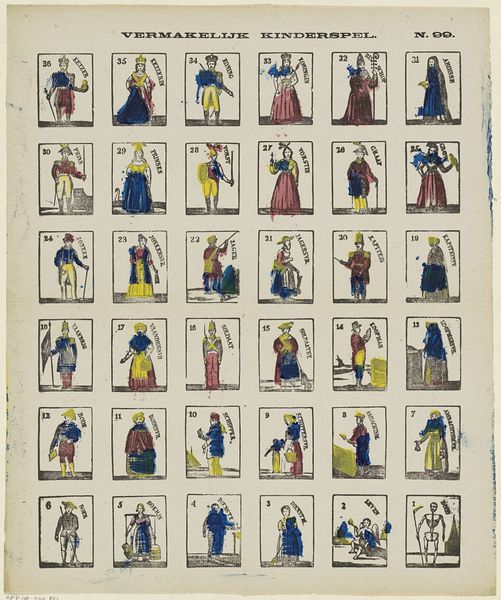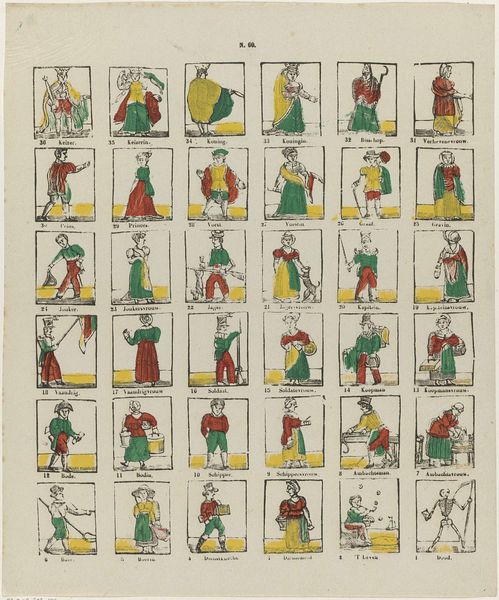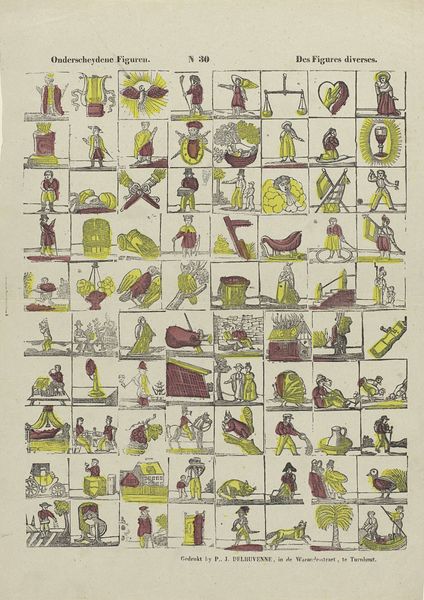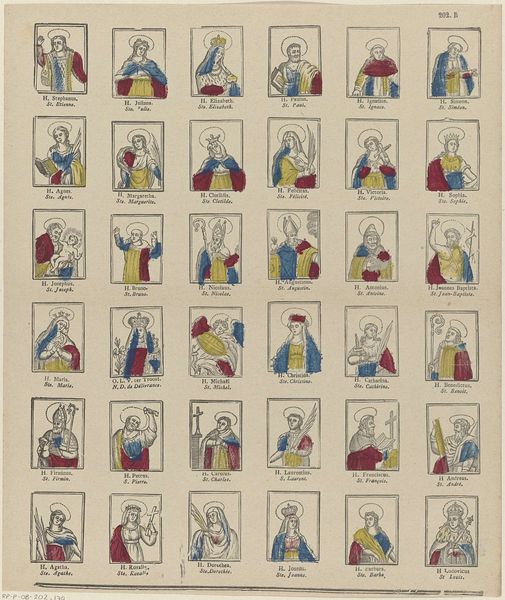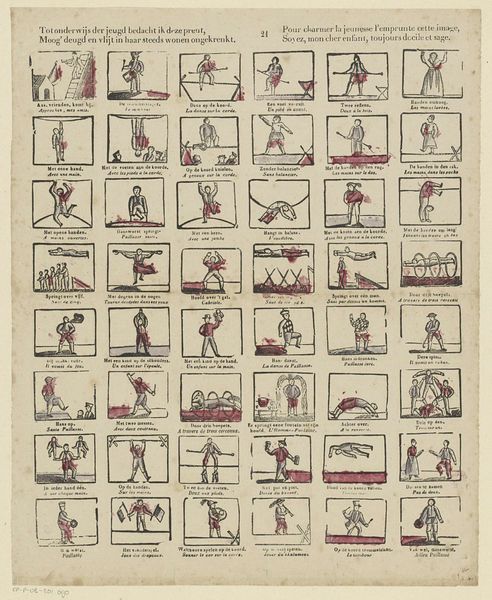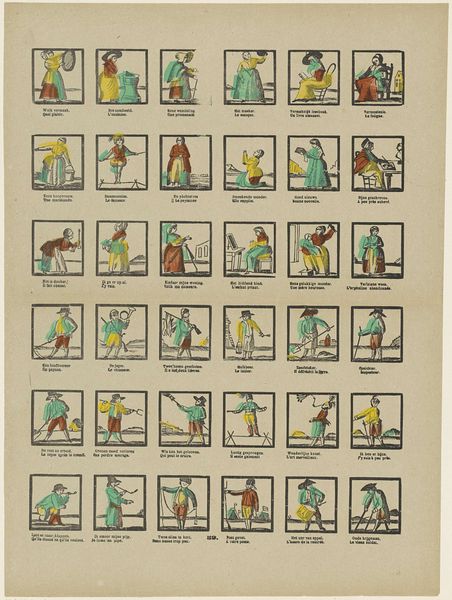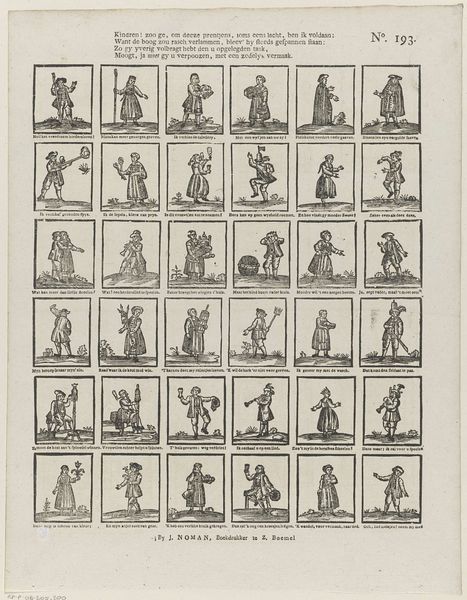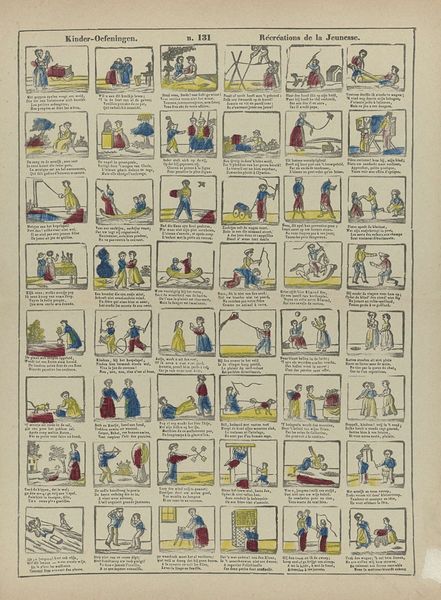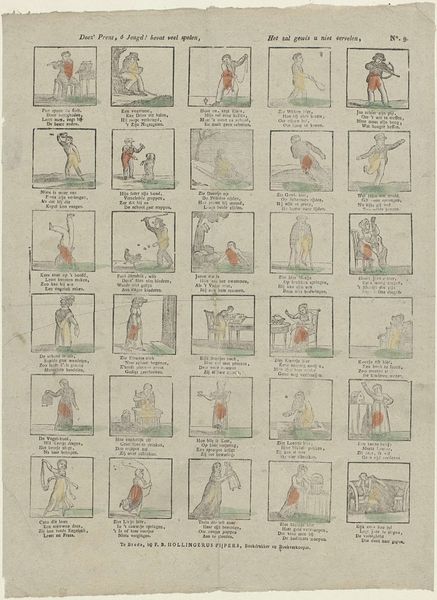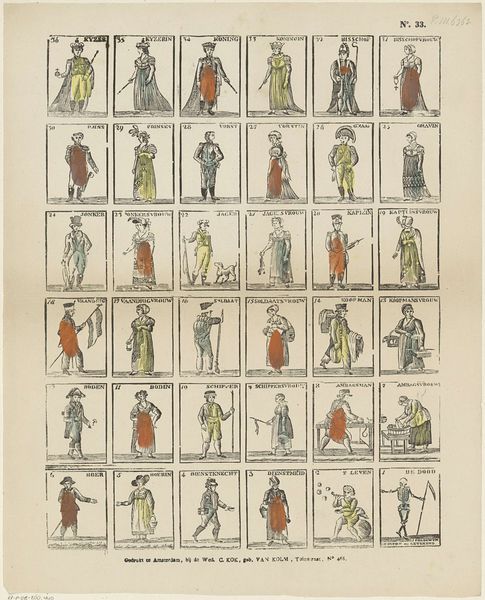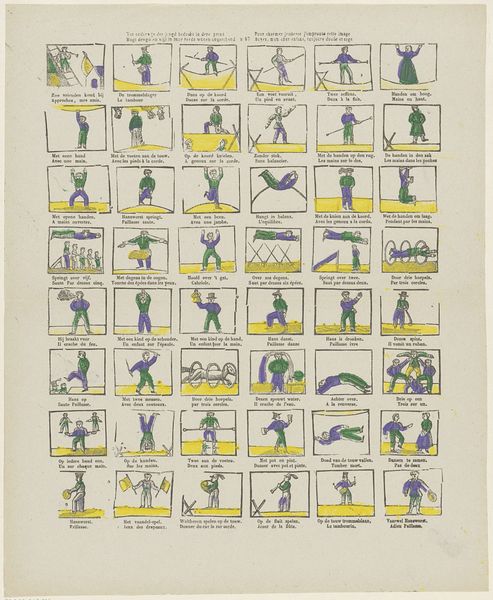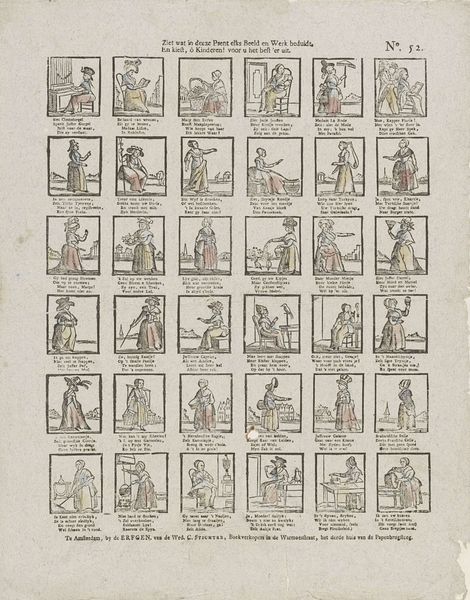
#
aged paper
#
quirky sketch
#
sketch book
#
personal sketchbook
#
sketchwork
#
ink colored
#
sketchbook drawing
#
storyboard and sketchbook work
#
sketchbook art
#
initial sketch
Dimensions: height 395 mm, width 338 mm
Copyright: Rijks Museum: Open Domain
Curator: Looking at "Floskaartjes," dating roughly from 1800 to 1833, currently held at the Rijksmuseum, I'm immediately struck by its resemblance to a game board, maybe a deck of cards gone awry. What's your initial take? Editor: Yes, there is a regimented yet somehow playful feeling to it. All those figures lined up in neat rows feel archetypal, even… symbolic. What sort of social strata do you think it represents? Curator: I think it offers a snapshot, maybe even a critical one. Look how professions and social roles are presented almost as caricatures— the soldier, the farmer, the serving maid. The rigid format hints at the societal constraints of the period, perhaps commenting on limited social mobility and fixed roles. Editor: Precisely! And observe the repetition of specific visual elements - the headwear, for instance, across different categories, or the gestures and postures. It is as if certain behavioural scripts were believed to naturally flow out of one's belonging to a group or community. Are you implying that its symbolism leans towards resistance? Curator: Resistance may be too strong a word, but it subtly questions power dynamics through visual representation. Note how authority figures are positioned prominently at the top, and the laboring classes towards the bottom, creating a clear visual hierarchy. And the individual cards do appear as 'types,' reducing individuals to the roles that they occupy. This almost echoes contemporary debates about social structures and representation. Editor: I find it so fascinating how such an seemingly simple piece speaks volumes about the world it emerged from. It makes us think of what has endured through imagery and what meanings transform in the face of progress and disruption. It's a looking glass of values of a certain period. Curator: I agree. "Floskaartjes" gives us such valuable insight into 19th-century societal norms and expectations while prompting relevant contemporary discussion about representation. Editor: Indeed. Thank you for unpacking it for us; what at first looks like simple categorization turns out to be so deeply laden with assumptions about order, value, and progress.
Comments
No comments
Be the first to comment and join the conversation on the ultimate creative platform.
